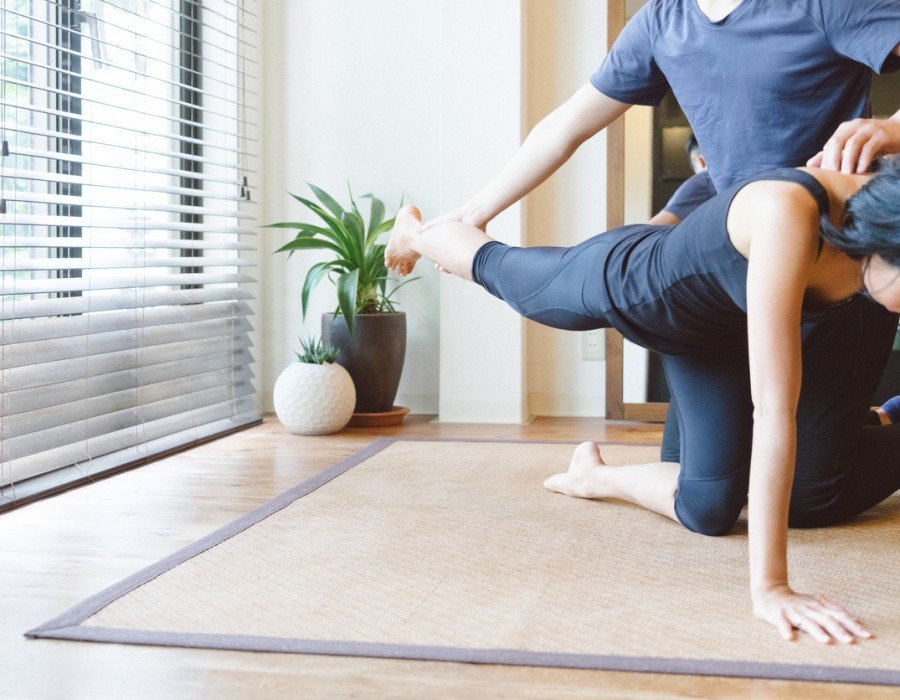Fitness and Performance
How Pilates can make a positive impact on your daily wellbeing

Nowadays, we’re a lot more conscious about our own mental health and wellbeing.
Whether this be in the form of daily meditation or attending regular fitness classes, there are many ways we can help ourselves. In today’s blog, we meet Helen Moir, who will be discussing the benefits that Pilates can have on your overall wellbeing.
Our health and wellbeing are vital in helping us lead a happy and healthy life; something which we can regularly neglect. Everyone from family to friends and work relationships will benefit from the time we spend looking after ourselves. With this in mind, the healthier and happy we are, the better prepared we are for any daily challenges we may face. Subsequently, the better prepared our bodies are in being able to withstand the stresses and strains placed on it.
Pilates is one way of looking after both ourselves and our bodies.
By becoming more aware of our bodies and how they move, we are able to reduce or correct bad posture and muscle imbalance. Additionally, we can ease joint stiffness and strengthen weaker muscles with routine and regular practice over time.
Incorporating Pilates into your diary
Make time to schedule Pilates into your weekly routine. As a result, you’ll see your precision and skill take shape as you focus your mind and body on flowing controlled Pilates movements.
Pilates can also be used as a rehab tool. The Australian Physiotherapy Pilates Institute (APPI) method employ eight key principles and concentrating on five key areas of the body.
Pilates Rehab
The benefits of Pilates can:
- Improve and manage low back pain
- Improve spinal mobility
- Help with headaches and reduce neck instabilities
- Strengthen core muscles that stabilise the lower back and pelvis
- Retrain correct sequences of movement and muscle balance around the head, neck and shoulders
- Retrain correct gait patterns
- Improve balance to help prevent falls
- Rehabilitate groin injuries
- Provide stability training exercises for swimmers, and specific sporting activities including tennis, running and golf
Given these points, the APPI method is essentially a mind-body centering technique. There’s an emphasis on moving from a central core of stability, namely the lumbo-pelvic region. This method works by using an array of intensity of exercises with differing length of levers (various limb movements). Both mat-based Pilates and resistance equipment, such as reformers can be used. This, combined with breathing control, comprises the mind-body technique.
APPI Principles
The APPI method is based on eight principles:
- Breathing control – Exhaling on the movements requiring greatest effort and using inhaling to increase a stretch whilst holding a movement
- Concentration on each movement is vital to promote correct alignment and body awareness. This means the mind cannot switch off
- Control of movement is elemental when working against gravity and resistance in the matwork exercises
- Centering – your centre is your Pilates powerhouse. Furthermore, Pilates primarily facilitates core stability and builds on this through various arm and leg movements
- Precision – This is a long-term goal of Pilates. Regular practise results in greater awareness and control of movements
- Flow – Pilates uses free-flowing movements
- Integrated isolation – movement awareness helps you perform correct movement patterns
- Routine – Repetition improves skill and reaps greater benefits
Moreover, the APPI also uses five key areas of the body to optimise correct alignment and posture and to produce efficient movement for everyday activities:
Centering
From the lower back and pelvis, keeping the back in its neutral position. coupled with engaging the deep abdominal back and pelvis muscles in unison, helps to keep a strong and stable spine.
Ribcage
Remember to position the ribcage directly over the pelvis in both sitting and standing. In like manner, the entire back should rest naturally on the mat when in lying.
Shoulder blade placement
The APPI method uses some basic methods to create awareness of muscles responsible for shoulder blade stability. A physiotherapist can assist with this.
Head and neck placement
Remember to maintain the natural curve of the neck. Firstly, for ideal posture and secondly to prevent headaches and painful neck conditions. Looking at the body from the side, there is a small natural curve in the neck being supported by the deep neck stability muscles.
Breathing
Breathing in wide and full into the back and sides of the ribcage (and equally breathing out) encourages full relaxation of the muscles of the ribcage. An initial assessment will help identify areas of muscle weakness, muscle imbalance, stiffness, neural tension and balance ability. Similarly, a tailored home exercise program at the right level and intensity will allow for progression to be made.
Becoming aware of optimal postures in both everyday and sporting activities will help in working towards a happier, healthier you.